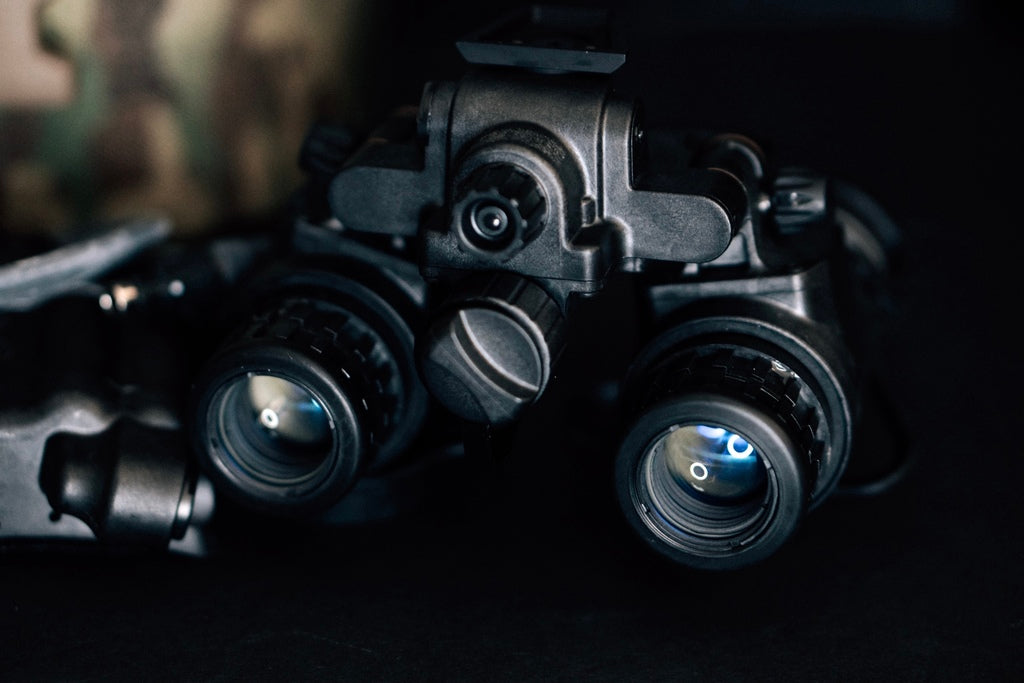
EBI (Equivalent Background Illumination)
EBI is a metric of noise and can be thought of as that, equivalent background noise. A condensed version is - a measured low light base noise level minus no light base noise level. This gives you your end noise value, or EBI. 2.5 is the MIL-SPEC maximum value. A basic definition of EBI the amount of light (noise) you see through a device when no light is entering the photocathode. You’ll see this referred to as the lowest light level in which an image can be detected. If light is below this level the image will be masked by the EBI. If light is above this level then the signal can overcome the base noise.
So what does that mean and how does this relate to perceived performance?
For magnified astronomy or other niche applications EBI can make a more tangible difference. In astronomy, the image you’re trying to resolve is almost completely deprived of light. When there is no light there is nothing to overtake EBI (the base background noise). For a ground use headborne system it will be less noticeable, to not noticeable at all, in perceived image quality.
The reason EBI matters more in the example of astronomy is there is no way to introduce more light into the image you’re trying to resolve. In addition to this, the light level is already almost unusably low. You’re observing an image comprised of almost absolute darkness with faint light trying to combat the background noise. No moon or other stars shining light into the environment you’re viewing, like in headborne use. Just whatever the cluster you’re viewing is and absolute darkness behind it.
Think of it like this. You’re listening to an old radio with the volume turned all the way down. You hear background static. You turn the volume up and the static is overtaken by the music playing. The static is EBI and volume level is light. Let’s say the background static volume is 1 on a scale of 0-100. In astronomy the max volume (ambient light level) of your radio is 1.5 (almost no ambient light). Barely enough to make out the music playing over the background static. For common headborne use the volume can go all the way up to 100. It’s possible to encounter the same 1.5 of ambient light like astronomy use does, but this isn’t very common or realistic for headborne use. Further, you can activate supplemental illumination. Almost all environments would land you in the 10+ volume level, at least. Which easily overtake the 1 background noise; and if you were ever in a 1.5 volume/light level to begin with you would want to employ some type of supplemental illumination. As even the lowest of EBI tubes will still be hard pressed to use for moving on your feet. Or another analogy being a fight: EBI vs Light Level. In the case of astronomy this fight is super close, almost 1v1. Or in some cases actually 1v1. So it’s more difficult to have a victor when the light level is barely above base noise level (EBI). In the case of headborne use this fight now becomes, at the very least, a 1v2 - EBI vs Light Level. It quickly becomes no contest the moment any sort of light is introduced that is able to overtake the base noise level (EBI).
The last analogy we’ll use to describe this is a simple one. With your regular eyesight (no night vision) imagine you’re in a completely dark room aside from a 1 lumen LED. The 1 lumen LED isn’t enough to combat the darkness and allow your eyes to see anything in the room. The darkness represents EBI and the led represents light level. Now imagine the same scenario but you have 50 1 lumen LED lights. While it’s not super bright in there, you can begin to see with your eyes as the light level has grown strong enough to overtake the darkness (EBI). This is an oversimplification but hopefully painted a picture for representation.
So does EBI matter? Sort of. All specifications contribute to performance. Some hold more weight in certain scenarios than others. In the case of headborne use, EBI is one that holds less than others. Any environment you would be using your device would be more than enough to overtake the EBI level. In environments where the light level is so low that EBI would begin to be noticeable, you wouldn’t be able to see very well at this point to begin with. At least not in any way you could quickly and accurately positively identify anything. The tube/s would be scintillating a lot, as it is, due to lack of ambient light. Resulting in the need to employ supplemental illumination.
Closing thoughts: A lower EBI is better, but the amount of difference it makes in a ground use headborne use case is almost imperceptible. If you plan to use your device as a headborne system don’t discount a tube’s performance solely based on EBI value. Factory devices, such as the PVS-31A or BNVD1531, commonly have EBI values in the realm of .9 / 1.6 in paired tubes. Sometimes a more stark contrast in values and sometimes even higher values; while also typically not matched identically. Why is that? If a 1.6 EBI is .7 higher than .9 EBI wouldn't that mean the higher EBI tube would stop producing a usable image while the other tube continues to perform? No, both tubes are within the already good range of MIL-SPEC max 2.5 EBI. Any differences between them are effectively imperceptible in headborne use, and as such is the reason you will commonly encounter divergent EBI levels in factory systems. If EBI held weight with regard to usable image quality in headborne use factory pairings would be held to a tighter tolerance of matching. Since, in this theory, the higher EBI tube would stop producing a usable image prior to the lower EBI; but because it bears no strong perceivable impact on image quality in a 1x headborne use it’s not a concern. Moreover, higher SNR typically coincides with higher EBI. This is a result of thermionic emissions of the Photocathode. The stronger the response of the Photocathode, generally, the higher higher SNR achieved while also bumping EBI as a result of increased electron activity. This is why those super high SNR tubes one may come across typically have an EBI value of over 1.2 or so.
We know there was a lot of analogies in this discussion, but hopefully you were able to take away some understanding in how EBI translates to performance. EBI is just one of many data metrics that contribute to how a tube performs.
